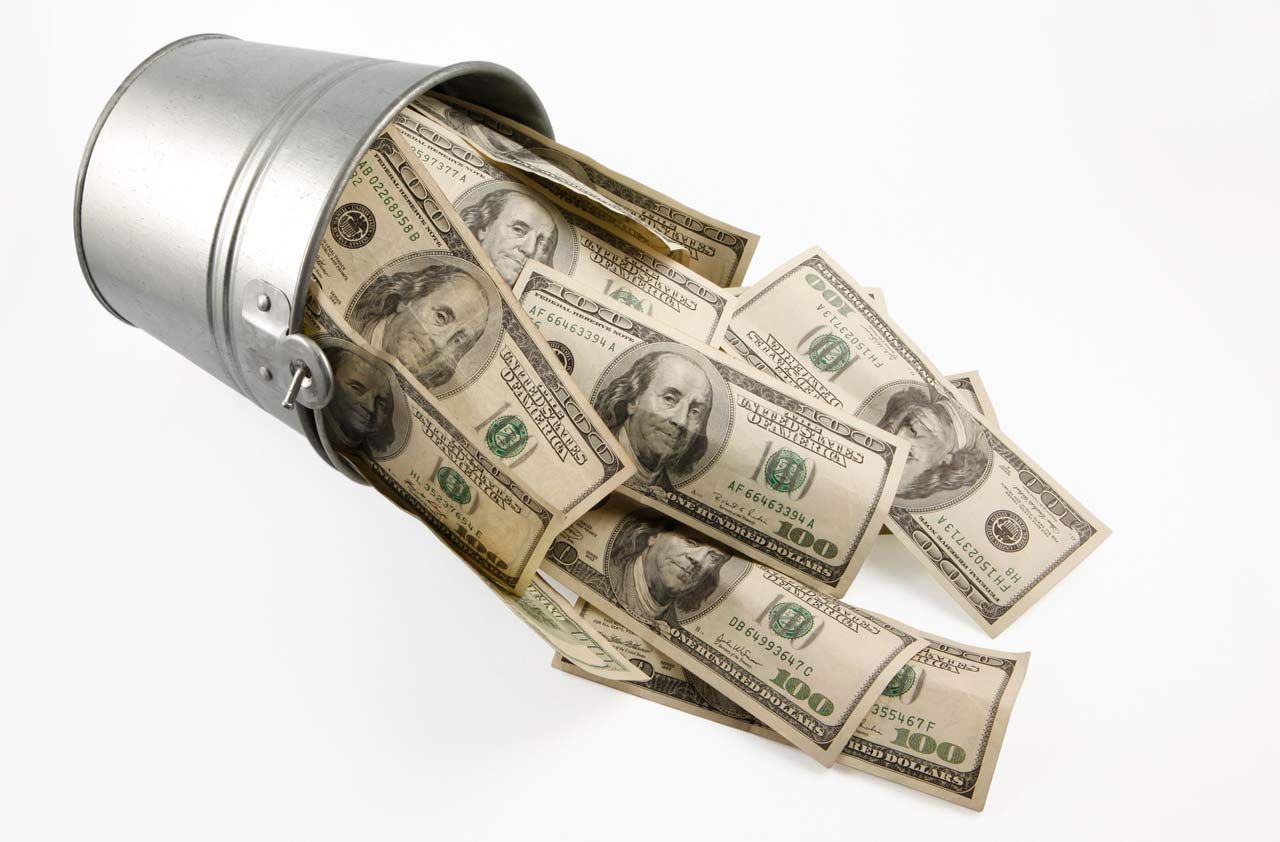The Bucket Approach for Investing in Your 50s
Pouring your savings into three different buckets is a handy way to get ready for retirement. Here's what goes into each of your buckets.


Planning for retirement is not as simple as it was for your parents. Retirement income used to be a three-legged stool: pension, Social Security income and savings. Recently, companies have been doing away with pension plans and Social Security does not cover nearly enough of an individual's retirement income needs.
Most savers are in their peak savings ability in their 50s, and it’s important time to build your buckets efficiently. To better balance your retirement savings, you should diversify your tax positioning. This can be done by contributing to three “buckets”: taxable, IRA (pre-tax) and Roth (post-tax).
The Taxable Bucket
Any money that is in your taxable bucket reaches your account after the IRS has already taken its cut. This money is like what you’d see on your paycheck after taxes have been taken out. This is the money that goes into your checking account via direct deposit on paydays. So, clearly, this bucket has no limit on what you can add to it. There are no age restrictions for adding money to this bucket, making it the most flexible of the three. Any amount of money you invest here is called your “basis” or “cost basis.” Examples of investments for your taxable bucket include CDs, savings accounts, stocks and mutual funds.

Sign up for Kiplinger’s Free E-Newsletters
Profit and prosper with the best of expert advice on investing, taxes, retirement, personal finance and more - straight to your e-mail.
Profit and prosper with the best of expert advice - straight to your e-mail.
IRA (Pre-Tax) Bucket
The second bucket is the Individual Retirement Account, aka IRA. This money can be from a traditional IRA or from funds rolled over from other retirement accounts, such as 401(k)s from former employers. All the money in this bucket is typically contributed on a pre-tax basis, meaning you earned the money and it was invested before taxes were taken from it. Therefore, you will have to pay taxes on it upon taking any distributions.
The limitations on adding money to this bucket change annually. If you want to add money and deduct the investment from your taxable income, your income must be below a certain threshold. The bulk of this money is built from contributing to a retirement plan through your employer in the form of a 401(k), 403(b) or TSP savings plans. As you hit your 50s and approach retirement, you are allowed to add more to your retirement account, known as a “catch up” period.
Typically, people have the majority, if not all, of their retirement savings in this bucket by the time they are in their 50s. The money you take out of this bucket, come retirement, is fully taxable at ordinary income rates.
The Roth IRA Bucket
The third, final and most complex of the three is the Roth IRA bucket. A Roth IRA is a special retirement account that you fund with any earned income you have remaining post-tax. Contributions to this account cannot be deducted on your income taxes. But unlike traditional IRAs, all withdrawals from this bucket — including any investment gains — during retirement will be tax free if you follow the IRS rules.
Another option for high-income earners who aren’t allowed to contribute to a Roth IRA is a Roth 401(k). Not all employers offer Roth 401(k)s, but they are becoming increasingly popular since they do away with income phase-outs for contributions.
This bucket is the hardest to build up due to income restrictions or employer availability. There are backdoor ways for such people to contribute. The availability and income restrictions typically cause this to be the smallest of the three buckets.
Which Bucket is Best?
The best bucket will depend on your specific financial situation. The pre-tax IRA bucket tends to look the most appealing. You save on taxes when you are working during your higher income tax years and spend when you are in a lower tax bracket during retirement. Although, what if you are not in a lower tax bracket during retirement? Tax rates change all the time and it’s not a given that your bracket will be lower in the future.
The Roth and taxable buckets are good because you can take money out tax free (with a Roth) or taxed less (taxable bucket), at capital gains rates with the sale of stocks or mutual funds. This assumes that the IRS doesn’t change its rules, which it has been known to do. Life is full of unknowns, and it’s important to remember that the saving rules for retirement are fluid.
The answer is the best bucket for taking income in retirement will likely change over time. As tax rules change, and your personal situation evolves, the best bucket for distributions will change, too.
Retirement savers put much time and effort into diversifying investments within their savings, so that they are not putting all their eggs in one basket. They own a mix of stocks, bonds, mutual funds and so on. Shouldn’t these investors also consider putting their different eggs in different tax baskets (buckets) as well? Not just in the IRA/401(k)/403b savings vehicles?
Retirement planning is always changing, so it’s important to stay on top of new saving mechanisms that can make the transition the best for you and your finances. Saving for your retirement isn’t easy but with careful planning, it can be accomplished and reduce your worries and stress at a time when you should be comfortably relaxing after decades of hard work.
Securities offered through LPL Financial, Member FINRA/SIPC. Investment advice offered through SFG Wealth Management, a registered investment adviser. SFG Wealth Management and Synergy Financial Group are separate entities from LPL Financial.
The opinions voiced in this material are for general information only and are not intended to provide specific advice or recommendations for any individual. This information is not intended to be a substitute for specific individualized tax advice. We suggest that you discuss your specific tax issues with a qualified tax adviser.
The Roth IRA offers tax deferral on any earnings in the account. Withdrawals from the account may be tax free, as long as they are considered qualified. Limitations and restrictions may apply. Withdrawals prior to age 59½ or prior to the account being opened for five years, may result in a 10% IRS penalty tax. Future tax laws can change at any time and may impact the benefits of Roth IRAs. Their tax treatment may change.
Get Kiplinger Today newsletter — free
Profit and prosper with the best of Kiplinger's advice on investing, taxes, retirement, personal finance and much more. Delivered daily. Enter your email in the box and click Sign Me Up.

Joseph C. Conroy is a CERTIFIED FINANCIAL PLANNER™ professional who is passionate about helping his clients pursue their goals. He founded Harford Retirement Planners to provide objective advice and knowledge to his clients. By partnering with an independent broker dealer, it allows Joe to sit on the same side of the table as his clients. It is this experience, working with many individuals over the years from many backgrounds, which inspired Joe to write the book "Decades & Decisions."
-
 Stock Market Today: Stocks Are Mixed Before Liberation Day
Stock Market Today: Stocks Are Mixed Before Liberation DayMarkets look forward to what comes with the reordering of 80-year-old global trade relationships.
By David Dittman Published
-
 Stagflation: What It Is and Why Retirees Should Care
Stagflation: What It Is and Why Retirees Should CareStagflation — the economic bogeyman of the 1970's — may return to the US. Here's what it could mean to your retirement.
By Donna Fuscaldo Published
-
 What You Don't Know About Annuities Can Hurt You
What You Don't Know About Annuities Can Hurt YouLack of awareness leads many to overlook these potent financial tools, and with the possibility of running out of money in retirement, that could really hurt.
By Ken Nuss Published
-
 Three Keys to Logical Investing When Markets Are Volatile
Three Keys to Logical Investing When Markets Are VolatileFocusing on these market fundamentals can help investors stay grounded rather than being swayed by emotion or market hysteria.
By Dennis D. Coughlin, CFP, AIF Published
-
 Yes, the Markets Are Spooked, But You Don't Have to Be
Yes, the Markets Are Spooked, But You Don't Have to BeIt's human nature for investors to freak out in a downturn. But with a little discipline, you can overcome the urge to sell and stay focused on long-term goals.
By Jimmy Lee, IAR Published
-
 Remembering Bogle: A New Standard for Municipal Investing
Remembering Bogle: A New Standard for Municipal InvestingImprovements in technology, data, systematic trading and risk analytics have led to more successful municipal indexing.
By Paul Malloy Published
-
 Winning Strategies for Financial Advisers as Clients' Lives Evolve
Winning Strategies for Financial Advisers as Clients' Lives EvolveHow can the wealth management industry help make life transitions easier for the adviser and the client?
By David Conti, CPRC Published
-
 How Advisers Can Establish Relationships With HNW Prospects
How Advisers Can Establish Relationships With HNW ProspectsThese strategies can help to build influence with high-net-worth individuals, who are often looking to an adviser for insight rather than solutions.
By Jeremy Green, CFP®, CTFA, CLU®, CEBS®, AEP®, EA, MSFS Published
-
 When Your Car Is Fixed, But You've Still Got the Problem
When Your Car Is Fixed, But You've Still Got the ProblemThis reader's experience with trying to get squealing brakes fixed under an extended warranty mirrors what others are experiencing these days.
By H. Dennis Beaver, Esq. Published
-
 U.S. Treasury to Eliminate Paper Checks: What It Means for Tax Refunds, Social Security
U.S. Treasury to Eliminate Paper Checks: What It Means for Tax Refunds, Social SecurityTreasury President Trump signed an executive order forcing the federal government to phase out paper check disbursements by the fall.
By Gabriella Cruz-Martínez Published